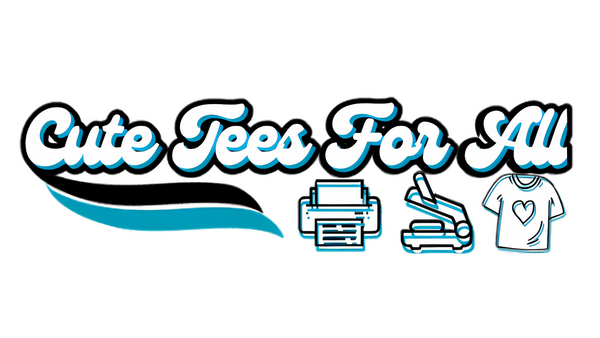Why Transparent Images Are Essential for DTF Printing
Share
Why Transparent Images Are Essential for DTF Printing
In the world of custom apparel printing, Direct to Film (DTF) printing has revolutionized the way businesses and individuals create vibrant, long-lasting designs. Whether you're printing custom shirts, hats, or other apparel, DTF printing offers flexibility, efficiency, and impressive detail. But to make the most out of this printing technique, using transparent images is crucial.
In this blog, we'll explore why transparent images are essential for DTF printing, how they improve the quality of your designs, and why you should always make them part of your DTF process.
1. Cleaner Designs with Transparent Backgrounds
One of the most significant benefits of using transparent images in DTF printing is that they ensure clean, seamless designs. Without a transparent background, any image you print will likely include an unwanted box or colored background that can appear awkward and unprofessional on the garment.
Transparent images (such as PNG files) allow only the core design to be printed, which means that the shirt’s fabric will show through in the background areas. For example, if you're printing a logo or intricate text, having a transparent image means there won’t be any unnecessary background color interfering with the design.
This creates a polished and professional look, ensuring your final product meets customer expectations.
2. Precision in Multi-Layer Printing
DTF printing involves laying down multiple layers of ink to achieve vibrant, detailed prints. Using a transparent image ensures greater precision during this process. Transparent backgrounds tell the printer exactly where to apply ink, preventing unnecessary layers that could ruin the design’s clarity.
This is especially useful for intricate designs or multi-color prints, where precise alignment of colors is key. The result? Smooth, professional designs without color bleed or unwanted thickness, making the garment feel comfortable and light.
3. Flexibility Across Different Garment Colors
With transparent images, you can print on a variety of garment colors without needing to adjust the background of the design. This adaptability is crucial for DTF printing businesses that offer custom printing on different colors and materials. Whether you’re working with dark t-shirts or light-colored hoodies, transparent images blend seamlessly with the fabric, maintaining a cohesive look.
Without transparency, your design may be restricted to certain garment colors, limiting your creativity and product offerings. Transparent designs ensure versatility, allowing your custom DTF prints to look great on any fabric color.
4. Faster and Easier Design Process
Using transparent images simplifies the design preparation process, saving time. When you work with transparent PNGs, there’s no need to spend hours removing backgrounds manually. Designers can quickly export their artwork and ensure it’s ready for DTF printing.
In a fast-paced printing business, where time is money, this streamlined workflow is invaluable. Transparent images let you go from design to print faster, enabling quicker turnaround times and improved productivity.
5. Enhances Durability and Comfort of Prints
One often-overlooked benefit of using transparent images is how they impact the durability and comfort of the final product. With transparent images, DTF printers only apply ink where necessary, avoiding thick, unnecessary layers. This reduces the risk of cracking or peeling over time, especially after multiple washes.
The result is a softer, more flexible print that maintains its vibrant colors without feeling stiff or heavy on the garment. This is particularly important for custom apparel that will be worn frequently.
6. Supports a More Professional Finish
For businesses or individuals offering custom DTF printing, using transparent images helps create a more professional end product. Customers expect clean, high-quality prints, and transparent images help deliver on this promise. Whether you're creating teacher appreciation shirts, branded company merchandise, or special event apparel, using transparent designs ensures your final product looks sleek and polished.
How to Create Transparent Images for DTF Printing
Creating transparent images for DTF printing is simple with the right tools. Most design software, such as Adobe Photoshop or Illustrator, allows you to save designs with transparent backgrounds. Here's a quick guide to help you:
- Open your design file in your preferred design software.
- Remove the background from the image by hiding or deleting the background layer.
- Save the file as a PNG to preserve the transparency.
By following these steps, your images will be ready for seamless DTF printing.
Final Thoughts
When it comes to DTF printing, the details make all the difference. Using transparent images is an essential step in producing professional, clean, and durable prints. Whether you're running a custom apparel business or printing for personal projects, transparent designs will ensure your prints are of the highest quality.
From eliminating unwanted backgrounds to enhancing design precision and garment flexibility, transparent images are a must-have for any successful DTF printing process. Incorporating this small but crucial detail will help you create more professional products, delight your customers, and ensure your prints stand the test of time.
